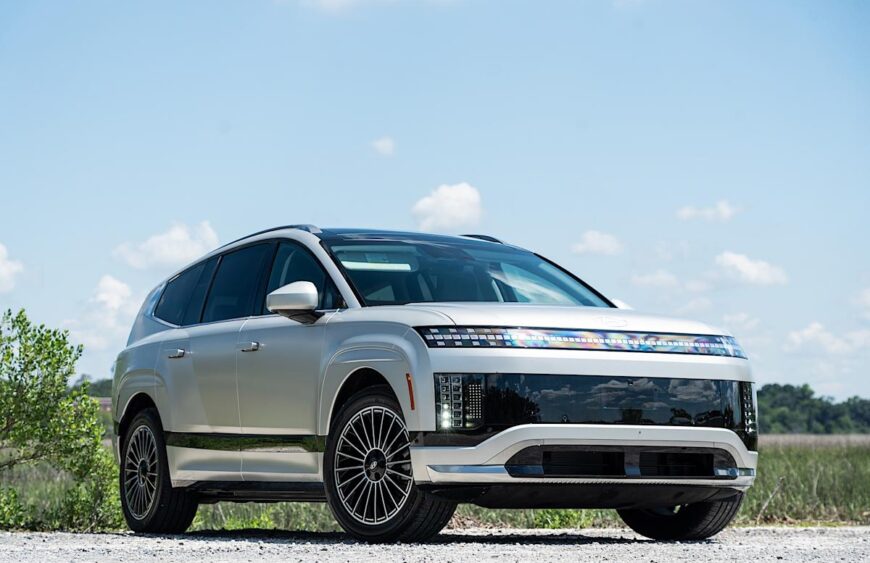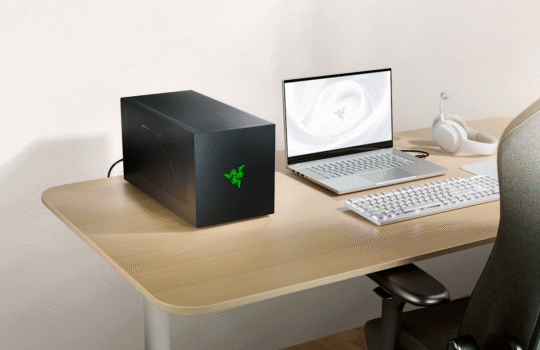Hyundai’s Ioniq 9 is a big electric SUV with big style

The pool of electric vehicles currently available on the North American market keeps getting wider and deeper. But, since the beginning, there’s been something of a hole right in the middle. A big hole, as it turns out. The three-row SUV, one of the most popular segments in American motoring, has been woefully underserved. The only real options come on the high-end, with things like the or the .
Kia added a new and more attainable option last year with the , and now it’s time for the other side of the corporate family to enter the fray with its own option, the Hyundai Ioniq 9. The latest American-made electric SUV from the Korean giant bears sharp styling and impressive performance. After a day piloting one through the countryside around the Savannah, Georgia factory where it’ll be built, it’s hard to argue against its $58,955 starting price.
Economy-Sized
There’s no denying that Hyundai’s new Ioniq is huge. At 199 inches long, it’s three inches bigger than the Hyundai Palisade, the company’s now second-biggest three-row SUV. However, Hyundai’s designers have done a stellar job of giving its new biggest baby a very compelling shape.
Many SUVs with that much space resort to acres of flat sheet metal just to cover the distance between the bumpers, but the Ioniq 9 has a subtle, sophisticated and, equally importantly, aerodynamic shape. I confess I’m not a massive fan of the nose and its bland curves, but I absolutely love the subtle taper at the rear. That not only helps with the coefficient of drag (which measures at 0.269), but also helps make this thing look much smaller than it is.
The Ioniq 9 has a stance more like a Volvo station wagon than a gigantic family hauler, but make no mistake, it’s the latter. That’s immediately evident as soon as you climb into the third row. It’s a bit of a slow process thanks to the power second-row seats, but once your path is clear, access to the rear is easy, and I was shocked to find generous headroom back there. There’s even a tolerable amount of legroom for an adult.
Even better are the 100-watt USB-C outlets that are present even in the way-back. All three rows have access to high power outputs that’ll keep just about anything short of a juiced on the go. Second-row seating is far more comfortable, especially if you opt for the Ioniq 9 Limited or Calligraphy trims with a six-seat configuration. These give you a set of heated and ventilated captain’s chairs. (A seven-seat, bench configuration is also available.)
The seats up front are quite similar, also heated and ventilated, with the driver’s seat adding massage. Extending leg rests also make the Ioniq 9 an ideal space for a nap during a charging stop. It’ll need to be a quick one, though.
Power and Charging
The Ioniq 9 is built on Hyundai’s E-GMP platform, which also underpins the Ioniq 5 and Ioniq 6, among others. That includes an 800-volt architecture and a maximum charging speed of 350 kW. Find a charger with enough juice and it’ll go from 10 to 80 percent in 24 minutes.
Yes, it has a Tesla-style NACS plug, which means you can use Superchargers without an adapter. Still, sadly, Tesla’s current suite of chargers isn’t fast enough to support that charging rate. That means you’ll have to use a CCS adapter, which is included.
All those electrons get shoved into a 110.3-kWh battery pack, with roughly 104 kWh usable. Maximum range depends on which trim you choose, from 335 miles for a base, rear-drive model, dropping to 311 miles for a top-shelf Performance model with dual-motor AWD. Naturally, that upgrade gets you more power, either 303 or 422 horsepower, depending on which dual-motor variant you choose. Still, even the single motor has 215 hp.
I sadly was not able to sample the single-motor flavor, but the Performance Calligraphy Design I drove was plenty snappy. Even in Eco, the most relaxed of the available on-road drive modes, the Ioniq 9 had plenty of response to make impromptu passes or simply to satisfy my occasional need for G-forces. There’s also a selection of off-road drive modes for various types of terrain, but that’s clearly not a focus for this machine. While it’ll do just fine on unpaved surfaces and some light off-roading, given the sheer dimensions of this thing, I wouldn’t point it down any particularly tricky trails.
Behind the Wheel
Much of my time spent driving the Ioniq 9 I was sitting in traffic, cruising on metropolitan streets or casually motoring between rest stops over broken rural roads. I’d say that’s close to the average duty cycle for a vehicle like this, and the Ioniq 9 was a treat over most of it.
At slower speeds, the suspension proved a bit rough, possibly due to the 21-inch wheels on the Calligraphy trim. But, over 30 mph or so, everything smoothed out nicely. This three-row SUV is calm and quiet at speed, helped by sound-isolating laminated glass in the first and second rows, plus active sound canceling akin to your headphones, but on a significantly larger scale.
The only place where you hear any road noise is back in the third row. There’s noticeably more wind noise and a bit more whine from the rear motor, too, but I’d gladly take that over the drone of an average SUV’s exhaust out the back.
Behind those rear seats, there’s 21.9 cubic feet of cargo space, or a whopping 86.9 if you fold both rows down. Yes, there is a frunk, but it’s tiny and it’s fully occupied by the charging cable, CCS adapter and flat tire kit.
All the Tech
Those 100-watt USB-C ports are definitely the tech highlight on the inside of the machine. Still, you’ll also find Hyundai’s standard infotainment experience here, including both wireless Android Auto and Apple CarPlay. They’re experienced through a pair of 12.3-inch displays joined at the bezel to form one display, sweeping from behind the wheel out to the middle of the dashboard. On the Ioniq 5 and Ioniq 6, this looks impressive. On the Ioniq 9, it honestly looks a bit Lilliputian given the giant scale of everything else here.
The Ioniq 9 features some lovely styling touches, subtle RGB LED mood lighting and generally nice-feeling surfaces — so long as your fingers don’t wander too far down. Harsh plastics covering the lower portions of the interior feel less than premium for a machine that otherwise looks this posh.
But it at least carries a fair price. You can get in an Ioniq 9 for as little as $58,955, if you don’t mind the single-motor version. You can also subtract the $7,500 federal incentive for . There are six trims to choose from, with the top-shelf Performance Calligraphy Design AWD model you see pictured here costing $79,540 after a $1,600 destination charge.
Yes, that’s a lot, entering into Rivian R1S territory. But, where the Rivian is quicker and certainly more capable off-road, the Ioniq 9 is roomier, more practical and honestly more comfortable for the daily grind.
You can also save a few thousand by going with a , but I feel like the extra presence and features of the Hyundai will woo many. Either way, you’re getting a winner, which is yet more proof that our current slate of EV options is the best yet, and only getting better.
Trending Products






